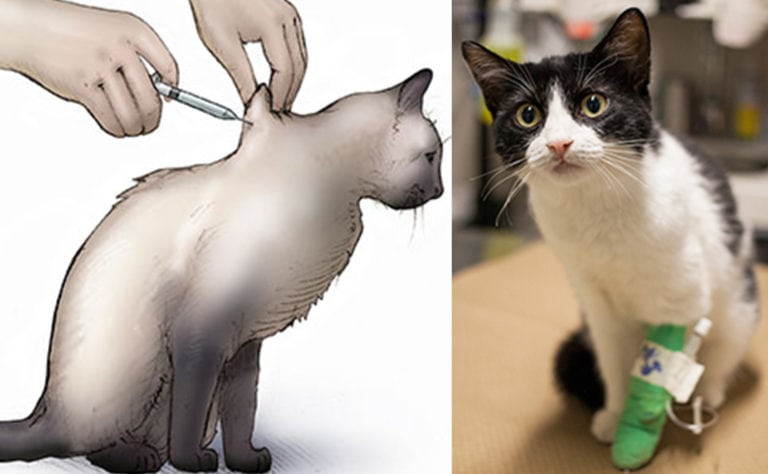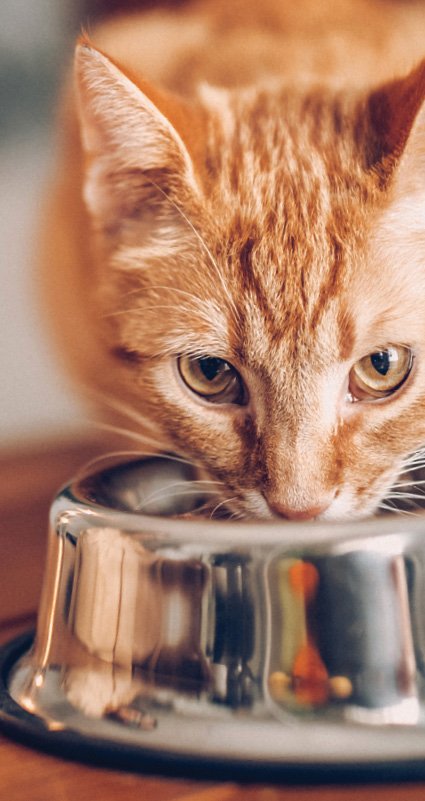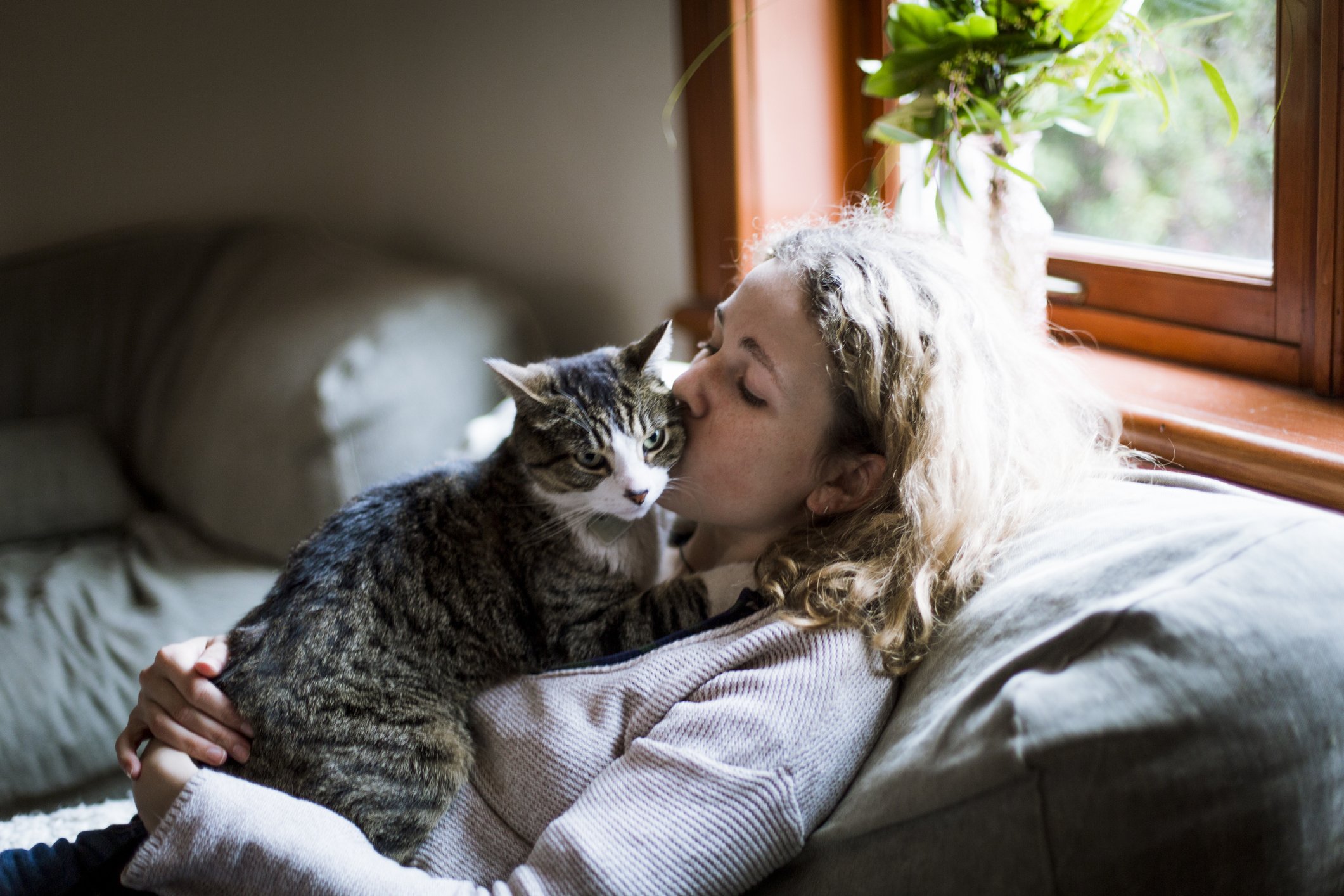When To Contact Your Vet
Contact your vet if your cat is showing any of the symptoms listed above or you are worried they might have diabetes. The sooner your cat is diagnosed, the better their chance of recovery.
You know your cat best. If they dont have the symptoms listed above but you are still concerned its always best to contact your vet.
When To Get Veterinary Help
Our cats mean the world to us, and so it can be tempting to pick up the phone to the vet every single time we think something is even slightly amiss.
Not every diabetes symptom means the worst possible diagnosis though.
A dull or matted coat, for instance, could be the result of fleas. Or their recent lethargy may be down to a lack of sleep, or stress brought on by a change in routine.
Were not for one second saying these symptoms may not require medical intervention, but its sometimes worth spending a day or two trying to get to the root cause of the issue before taking a trip to the vets.
With an illness such as diabetes, we do recommend erring on the side of caution if you believe your cat is symptomatic. Symptoms such as weight loss or a decreased appetite, especially when combined with frequent urination, are big red flags and even if diabetes isnt the cause, there may be another underlying condition that is seriously affecting the quality of your cats life.
What Causes Feline Diabetes
Type 1 diabetes, which is rare in cats, involves an inappropriate immune response to the pancreatic beta cells that initiate insulin release.
Type 2 diabetes, also called idiopathic hyperglycemia, has a range of root causes. These include obesity, a high-carbohydrate diet, inactivity, and genetic factors. Male cats, indoor cats, and those middle- to older-aged cats are also at increased risk of developing diabetes. Diabetes is more common among some populations of Burmese and Siamese cats around the world.
Of these causes, diet and obesity are the easiest to control and the most related to treatment.
Diabetes is an endocrine condition and deeply connected to diet. Though we dont know how much of an impact diet has on your cats chances of developing diabetes, several things are clear.
Cats are obligate carnivores with a metabolism optimized for meat, meat, and more meat. Every aspect of their physiology, from saliva to pupils to claws to intestines and stomach acid, is characteristic of an animal-eating machine. As an animal optimized for this type of high-protein, high-fat, low-carbohydrate diet, cats are capable of metabolizing carbohydrates but, compared with omnivores, are less efficient at it.
Metabolically, cats are similar to people with diabetes. Even healthy cats exhibit some insulin resistance, and the gluconeogenic pathway, which produces glucose from non-carbohydrate substances like lactate, is always open, allowing glucose to flood the bloodstream unhindered.
You May Like: Type 1 Diabetes Low Blood Sugar
Signs Your Cat Has Diabetes
Diabetes mellitus is a chronic, and potentially debilitating, condition in cats. The disorder is most prevalent among obese cats, male cats over eight years old, and those on a diet high in carbohydrates.
Cases of feline diabetes are on the rise, and given the severity of the condition, it is important to take early measures to prevent or manage the health of your diabetic cat.
Typically, diabetes mellitus is a disorder that results when the cells develop a resistance to insulin, a hormone that aids the entry of glucose into the cells. This causes a build-up of the glucose levels in the bloodstream.
Diabetic cats mostly suffer from Type II diabetes, where the body cells can no longer adequately respond to insulin, leading to elevated levels of glucose.
A complete diagnosis always requires a visit to the vet, but a closer look at your cat at home can tell you if theres a problem. Bring your cat to Dr. Minta Keyes for a check-up if you notice any of these signs:
Later Signs Of Diabetes In Cats

If a cat displays a combination of the following symptoms, they could be in critical condition and require intensive care. Later signs of diabetes include the following:
3. Inability to Jump & Loss of InterestWhile the loss of interest may be a subtle sign, you can tell your cat is sick if you keep proper track of your cats activity. If your cat can no longer jump on furniture they used to be able to, they may be sick.
4. Change in GaitDiabetes in cats can lead to weakness, which makes them walk flat on the back of the hind legs. Following the elevated blood sugar level, neuropathy affects the nerves in the hind legs, and the condition may result in permanent paralysis if left untreated for long.
5. Lack of Appetite, Vomiting, LethargyThe health of your cat is in jeopardy if you notice these late symptoms of diabetes mellitus. Hyperglycemia, hypoglycemia, and gastroparesis can cause nausea in cats leading to vomiting, lost appetite, and lethargy.
Don’t Miss: Is Metformin Bad
How Common Is Diabetes Mellitus In The Cat
Diabetes mellitus is the second most common endocrine disease in cats. It is seen more frequently in middle-aged to senior cats and is more common in males than females. While the exact incidence is unknown, the number of diabetic cats is increasing at an alarming rate due to the tremendous increase in the number of overweight and obese cats. It is important to note that a cat three pounds over its ideal weight is considered obese, and that means the average domestic cat weighing 13 pounds or more is at high risk for developing type 2 diabetes mellitus.
What Are The Signs Of Diabetes In My Cat
The signs of diabetes can be similar to a number of other diseases and include:
- increased thirst and or appetite
- passing more urine
- vomiting
- being more prone to infections
- some affected cats may have sunken back legs so the cat is standing on its ankles, as a result of nerve damage.
Object reference not set to an instance of an object.
Also Check: Do Type 1 Diabetics Have High Or Low Blood Sugar
What Is Diabetes Mellitus
Diabetes mellitus is a disease of the pancreas, a small organ located near the stomach. The pancreas has two different types of cells that have very different functions. One group of cells produces the enzymes necessary for proper digestion. The other group, called beta cells, produces the hormone insulin, which regulates the level of glucose in the bloodstream and controls the delivery of glucose to the tissues of the body. In simple terms, diabetes mellitus is caused by the failure of the pancreas to regulate blood sugar.
The clinical signs of diabetes mellitus are related to elevated concentrations of blood glucose and the inability of the body to use glucose as an energy source.
What Are The Causes And Risk Factors For Feline Diabetes
Diabetes can be split into many types, with the two most common being Type I and Type II. Cats suffer almost exclusively from Type II diabetes, which is characterised by a reduction in response of the body to insulin , often alongside an inadequate amount of insulin being produced.
There are multiple risk factors for the development of feline diabetes, many of which are shared with people with Type II diabetes. These include, most notably:
- Obesity
- Some drugs / medications
- Other diseases
Cats who develop diabetes as a result of one or more of the above risk factors initially develop insulin resistance. Insulins role is to lower blood sugar levels. This is in part by stimulating glucose to be stored and in part by allowing cells to use up glucose as fuel, and so resistance to this action leads to higher blood sugar levels and to cells being starved of energy. High blood sugar then has a toxic effect on the cells in the pancreas that produce insulin, reducing the amount of insulin they can produce. This reduced insulin level causes blood sugar to increase even further and simultaneously prevents the cells of the body from accessing the energy they need. It is the combination of high blood sugar and the inability to use the available energy that causes the clinical signs we recognise in cases of diabetes.
Don’t Miss: What Is The Lowest Dose Of Metformin You Can Take
Unique Symptoms Of Cats With Diabetes
The symptoms of cats with diabetes can be tough to spot. You might notice that your cat is drinking more water than usual, or not playing as much as they usually do. They could also have an increased appetite yet show signs of progressive weight loss. If you’re noticing these symptoms in your cat, it’s important to get them checked out by your veterinarian right away! Let’s take a look at the 7 key symptoms of cats with diabetes to help you know what might be going on if you see some of these signs from your furry friend.
Preventing Diabetes In Cats
While there are some factors that cause diabetes that cannot be prevented , there are many steps you can take to prevent diabetes in your cats. They include the following:
If you currently have a diabetic cat, dont be alarmed. Diabetes can absolutely be managed, and your cat can still lead a long and happy life. The following are some tips on how to manage your cats diabetes at home and in coordination with your veterinarian.
Don’t Miss: D Cells Somatostatin
Early Signs Of Diabetes In Cats
1. Excessive Urination & ThirstYour cat may be suffering from Type I or Type II diabetes if they are urinating frequently. The kidneys attempt to remove the excess glucose from the body through urine. The high concentration of glucose pulls excessive amounts of water into the urine. Increased urination can mean high body water losses, possible dehydration, and increased thirst.
2. Increased Weight Loss & AppetiteWhen a cat has diabetes, cells can no longer absorb the glucose from the blood appropriately. As a result, starved cells will trigger the breakdown of the fats and proteins available in the body as an alternative source of energy.
The cat may lose weight in a failed attempt to fill the void left after burning fats and proteins, and as a result, their appetite increases.
Popular Insulin Products Compared

- Lantus or glargine is a long-acting human insulin analogue that appears to be safe and effective when given to cats. It lasts for 12 18 hours in the body. In one study on the effectiveness of glargine treatment, 84% of 55 cats achieved diabetic remission within six months.
- Detemir is a long-acting synthetic analogue of human insulin. Its administered one to two times daily and lasts for 18 21 hours. In a study on 11 newly-diagnosed cats treated with detemir, 81% went into remission.
- Prozinc/PZI is a long-acting bovine insulin designed for cats. It lasts for 10-14 hours. In a study of 133 diabetic cats, 85% achieved diabetic control within 45 days. In another study, 38% of cats given PZI achieved remission within 112 days or just under four months.
- Vetsulin or lente insulin is an intermediate-acting porcine insulin for dogs and cats. In a 12-month study of 25 cats given lente insulin, 84% had a good or excellent response and 28% reached diabetic remission within four months of treatment.
Though neither are formulated or marketed for cats, glargine and detemir have the best history of promoting feline diabetes remission.
Recommended Reading: Metformin Maximum Dose
How Do Vets Diagnose Feline Diabetes
Diabetes is diagnosed by the presence of the typical clinical signs in the face of persistent fasting hyperglycemia , and glucosuria .
This can be diagnosed by performing full bloodwork and a urinalysis. Your veterinarian may also use the blood sample to perform a serum fructosamine, which allows them to prove that the blood glucose has been elevated over time, and not just at the time it was measured in the hospital.
Lethargy And Lack Of Energy
Cats with diabetes can often be lethargic and lack energy. This might manifest itself as your cat seeming tired or not moving around as much as usual. With this, the symptoms of cats with diabetes can be lethargy and unwillingness to play. These symptoms are due to the excess glucose that builds up in the body which causes it to be unable to produce or use insulin properly, leading to an energy deficit. Having persistent hyperglycemia results in the feeling of lethargy and malaise.
Also Check: Long-term Side Effects Of Insulin Use
The Sitter Should Watch For These Signs Of Trouble
If your diabetic animal will be in a pet sitters or kennels care, make sure the caretakers will call your vet if there is any change in behavior, such as:
- Lethargy
A pet sitter should spend at least 1 hour twice a day in your home.
Just feeding and giving insulin injections is not a sufficient level of monitoring for a diabetic animal:
- Make sure the caretaker knows your cats daily routine and personality.
- The cat must be seen eating, walking around and exhibiting a bright and alert demeanor.
- If your cat is sleeping every time the pet sitter visits and the sitter just refreshes the food and water and gives the required insulin, this cat could be on their way to a diabetic crisis.
Too often, a client tells the vet that the pet sitter couldnt find the cat and left. This is bad in any case, but it could be life-threatening to a diabetic cat.
This may be a tough topic for many of you who love your pet dearly but are also in desperate need of a vacation. Take the time to find a solution that prioritizes your pets health so everyone can have a pleasant time while youre away.
Symptoms Of Feline Diabetes
The classic signs associated with feline diabetes include:
- Excessive thirst and drinking more
- Urinating a lot
- Weight loss
- Obesity
Unlike dogs, cats do not tend to get diabetic cataracts or eye problems. Pet parents may not notice weight loss if their cat is overweight or obese, but they will notice the excessive drinking and urinating. Diabetes can also make a cat feel nauseous or lethargic, and some pet parents notice that their cat is lying around a lot and not eating.
Another sign you may notice is that your cat is walking oddly or holding her back legs in a strange position. High blood sugar’s effect on the nerves of her back legs can sometimes weaken her hind legs. If you see any of these signs or behaviors, take your cat to the veterinarian to get tested.
Read Also: Best Candy For Diabetics
Which Cats Are Most At Risk
According to Cohn, risk factors for feline diabetes include:
- Age. Diabetes mellitus is generally seen in middle-aged and older adult cats.
- Obesity.“Obese cats have greater insulin requirements,” Cohn says, “and are more likely to be resistant to insulin and have Type II diabetes.” However, she notes that not all cats with Type II diabetes are overweight.
- Steroid therapy. “Cats given systemic steroids for a long period of time are more likely to develop diabetes because it can cause insulin resistance,” Cohn says.
- Other disorders. The American Association of Feline Practitioners notes that cats diagnosed with pancreatic disease, hyperthyroidism, renal disease, neoplasia, acromegaly, and hyperadrenocorticism are at a higher risk for developing diabetes.
Type I Or Type Ii Diabetes In Cats
- Type I – The cat’s body can no longer produce or release enough insulin into the body. This form of diabetes is relatively rare in cats.
- Type II – With this form of diabetes, the cat’s body produces enough insulin, but the tissues or organs do not respond appropriately to insulin and have become insulin-resistant. This type of diabetes is common in overweight male cats over 8 years old, and those that eat a high-carbohydrate diet.
You May Like: Metformin Average Dose
How Did My Cat Get Diabetes
Diabetes mellitus occurs either when your cats pancreas doesnt produce the amount of insulin your cat needs or when your cat doesnt respond appropriately to the insulin that is being produced . Just as with people, high glucose levels produce adverse effects that can be life-threatening if not treated.
Common causes:
-
Destruction of pancreatic beta cells
-
Chronic inflammation of the pancreas
-
Obesity
You may be familiar with type I and type II diabetes. Cats more commonly suffer from type II diabetes, which occurs when the pancreas becomes less sensitive to insulin. Type I, conversely, occurs when the body stops producing enough insulin.
Diabetes insipidus, which as mentioned above is extremely rare in cats, is caused by congenital defects or results as a complication of another condition, like a brain tumor.
Keep Your Cat Comfortable

The best thing you can do is to use the medication and diet your veterinarian prescribed and keep a close eye on your cats eating, drinking, and litter box usage. Because they are more thirsty, make sure they have plenty of access to fresh, cold water at all times. Limiting their intake of water may cause severe dehydration in a diabetic cat.
You should also plan to scoop their litter box at least daily and consider adding another box to make sure that they always have a clean, dry place to go. Cats can be finicky and like a clean place to go, so since they’re likely to be going more often, a second litter box is a really good idea and not just when they’re sick. They always like having litter box choices.
Also Check: Metformin Severe Side Effects

